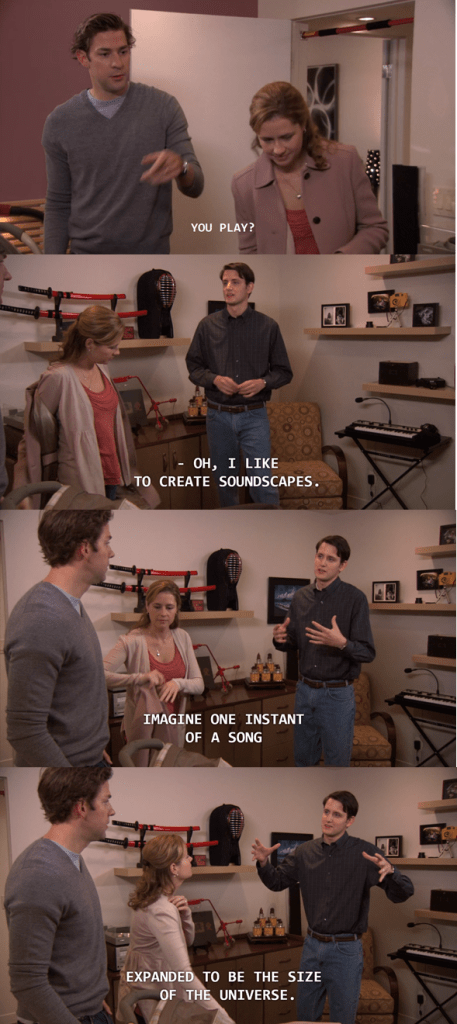I recently wrote about building your second brain. All of the cool ideas and projects related to crafting and curating an external store of information for your brain. The root of all of those projects is hypertext. Modeling information – not in a linear fashion – but as a series of interconnected nodes. The nodes and links build upon each other and provide contextual references. Storing knowledge more similarly to how our brain stores knowledge, with contextual associations and neural pathways linking all of the memories and information together.
One of many features of hypertext that still has untapped potential is StretchText. The term StretchText was first coined by Ted Nelson (one of the key figures in the history of hypertext) in 1967. But this feature never rose in popularity.
StretchText is essentially expandable information. Think of reading a short article and wanting more details about a particular sentence or fact from the article. StretchText would allow you to expand that sentence into an entire paragraph, providing more detail about that single data point. If there were further sentences in that paragraph that needed clarification, you could expand those into their own paragraphs. And so on and so on, until you had drilled all the way down to whatever depth was needed.
The idea behind StretchText is analogous to “soundscapes” from The Office.
 Instead of sounds, StretchText expands a single sentence or paragraph to multiple levels of depth. Conceptually, it doesn’t expand to fill the universe, but certainly at least a bookshelf and possibly a library when you expand out all the references.
Instead of sounds, StretchText expands a single sentence or paragraph to multiple levels of depth. Conceptually, it doesn’t expand to fill the universe, but certainly at least a bookshelf and possibly a library when you expand out all the references.
A fractal world.
Our world is fractal. I remember the first time engaging in an interactive online animation called The Scale of the Universe 2 (I don’t know if the animation works on mobile). It’s one of the best web visualizations I’ve ever seen. You start at the scale of a human being, and then proceed to spend an absurd amount of time zooming in or out to different scales. Diving into the subatomic scale on the low-end and to the size of the observable universe on the high-end.
Each level of scale has an incredible amount of complexity. Nebulas composed of solar systems. Solar systems composed of suns and planets. Planets (at least ours) composed of trees and animals. Trees and animals composed of bacteria and cells. Bacteria and cells composed of molecules. Complexity all the way down.
Information is fractal as well. I’ll use the example of books to illustrate. Books (at least the good ones) are the output of years – maybe even decades – of researching, reading, summarizing, and synthesizing other books. The section headings throughout a book are the synthesis of the key ideas of each passage. The chapter titles throughout a book are the synthesis of the key ideas of each chapter. The summary of a book is the synthesis of the key ideas in the whole book. Each provides different levels of depth, but still cohesively tells the same story.
Imagine being able to consume information – whether it’s from a book or some other source – in the same way that we can zoom in or out to different scales of our universe! Skimming the uninteresting elements at an abstract level, and then zooming down to the elements that pique your curiosity.
A critique.
The main critique against StretchText is that it does seem very similar to outlines and summaries. And the ideas are similar at a surface level. Both take information and try to condense it down to a more digestible size. The key distinction between the two ideas is that outlines and summaries are static. They exist at a fixed depth – a fixed level of abstraction. StretchText is dynamic. StretchText provides this ability to zoom. Zooming in or out – diving deep or pulling back – dynamically consuming information at different levels of depth.
Make it happen
StretchText has always been possible, but it required too much manual intervention. Some engineer could craft a slick demo of being able to zoom in or out to different levels of a book summary. But someone would have to synthesize and write each level of depth. The information at different levels would be static outlines and summaries. Creating static summary layers. And that would be exhausting for too many layers. Since humans have fixed amounts of time and attention, we’ve mostly stuck with 1 or 2 levels of depth. Our easily created and digestible podcasts/highlights/outlines/summaries that form the basis of the summarization and knowledge economy.
What’s changed is GPT-3 and the rise of NLP models.

StretchText becomes possible with GPT-3 and NLP. These natural language models have the capability to create the dynamism we need. We need multiple levels of depth. We need dynamic levels. We need something that can summarize and synthesize entire books, and then chapters, and then sections, and then subsections. And doing it all at scale. There’s still quite a few research and implementation hurdles, but the dream of StretchText is closer to reality than it has been in decades.